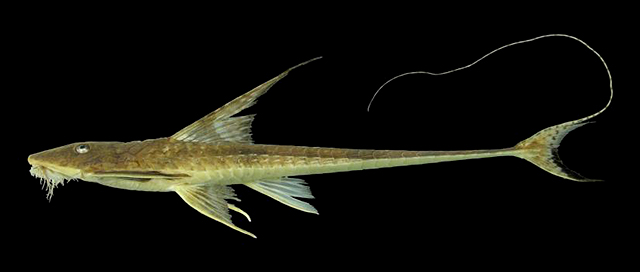| Loricariidae (Armored catfishes), subfamily: Loricariinae |
| 36.5 cm TL (male/unsexed); max.weight: 118.2 g |
|
demersal; freshwater |
| South America: Brazil, Pará, Altamira Municipality, Rio Curuá, Iriri-Xingu drainage, near town of Castelo dos Sonhos (Ref. 84258). |
|
In adults Loricaria birindellii is distinguished from all other nominal species of Loricaria by having a combination of an elongate dorsal-fin spine (36.0% SL based on the holotype vs. 16–29%, usually less than 26% SL) that is supported throughout most of its length by the first branched ray and an inconspicuous (vs. prominent) post-orbital notch with minimum orbital diameter 95.4–97.2% (vs. 71.8–91.5%) of maximum orbital diameter. It is further distinguished from similar and geographically proximate species, L. lata and L. simillima, by having a narrower head width (13.9–14.9% SL vs. 15.2–19.4% SL in L. simillima and 16.4–20.1% SL in L. lata), from L. clavipinna by having more divergent plates (21 vs. 18–19) and fewer coalesced plates (13 vs. 15–16) in the lateral series, and from L. cataphracta by having weakly (vs. strongly) developed odontode crests on head and dorsal trunk plates, more divergent plates (21 vs. 17–20, usually 19) and fewer coalesced plates (13 vs. 13–17, usually 15–16) in the lateral series (Ref. 84258). |
|
|
Least Concern (LC); Date assessed: 07 November 2018 Ref. (130435)
|
| harmless |
Source and more info: www.fishbase.org. For personal, classroom, and other internal use only. Not for publication.

